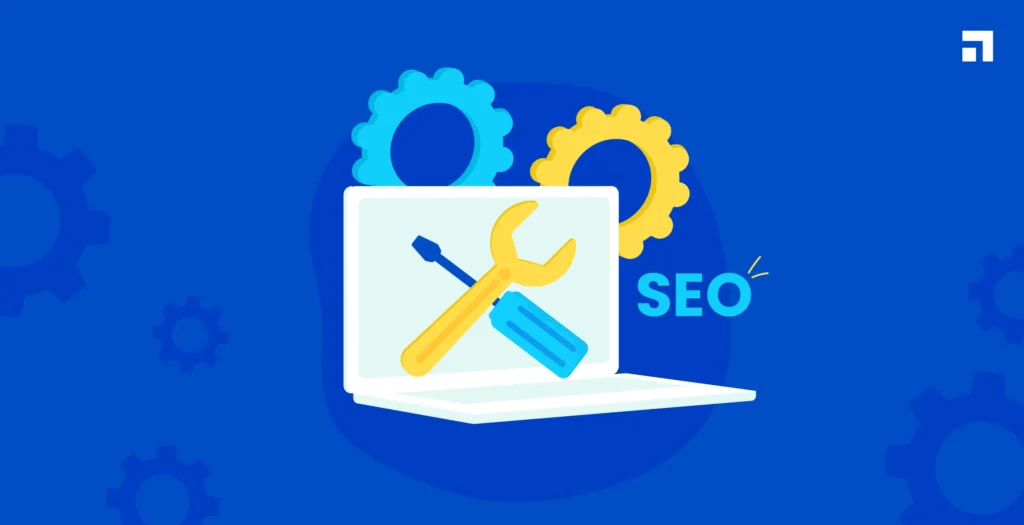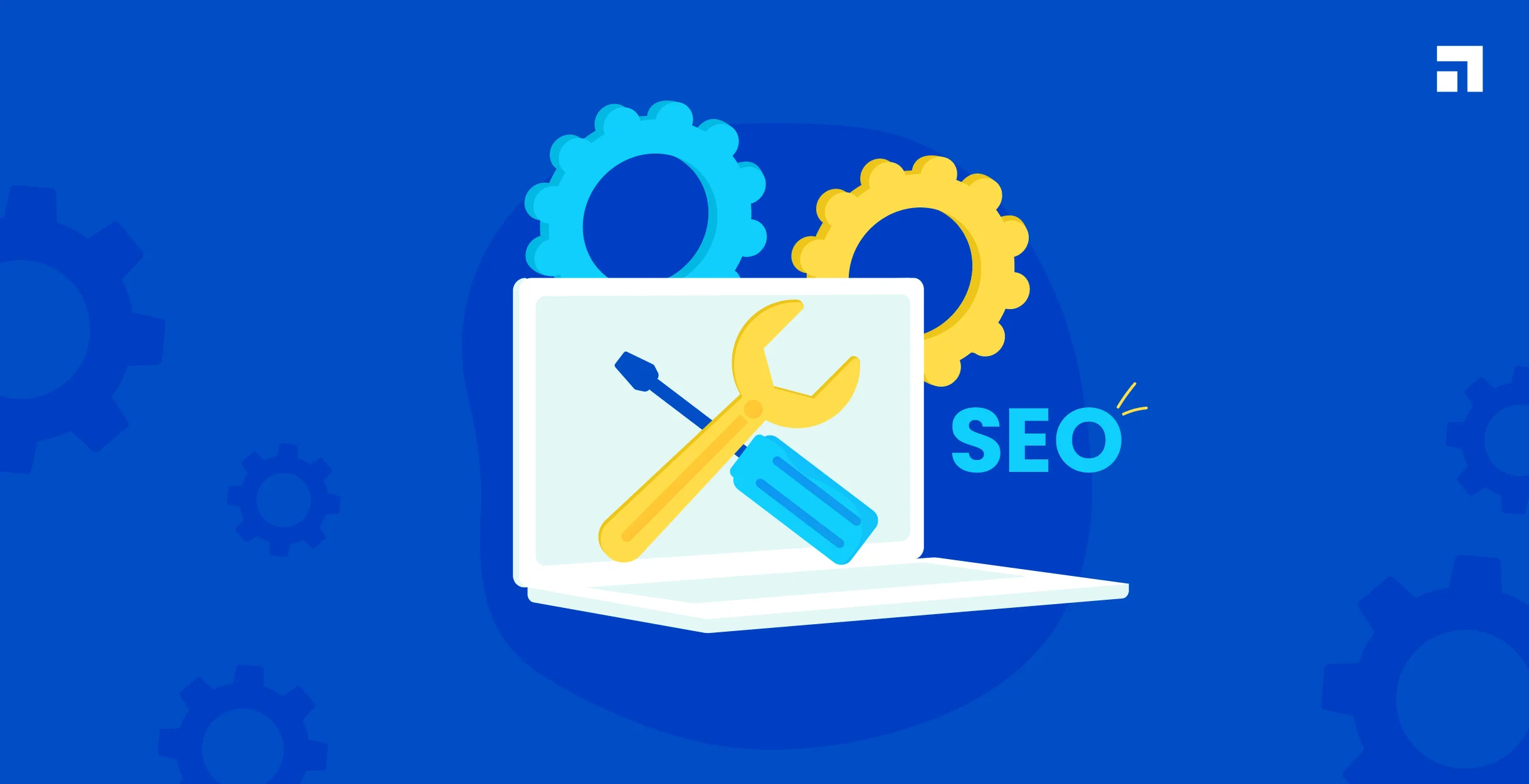Technical SEO Services – Enhance Site Performance
In the vast world of digital marketing, where every click counts, the backbone of a successful online presence lies in Technical SEO Services. Unlike the more glamorous aspects of SEO, technical SEO might not get the spotlight, but it plays a crucial role in ensuring that your website is accessible, fast, and easily understood by search engines. Think of it as the foundation of a house—without a strong base, everything else crumbles.
This article dives deep into the realm of Technical SEO Services, uncovering how they enhance site performance and search rankings, ultimately propelling your website to new heights.

What Is Technical SEO?
Technical SEO refers to the process of optimizing a website for the crawling and indexing phase, ensuring that search engines can access, crawl, interpret, and index your website without any problems. While traditional SEO focuses on content and keywords, technical SEO is important because it deals with the technical aspects that impact a website’s performance and search engine visibility.

At its core, technical SEO is about creating a solid foundation for your website. It ensures that your site is well-structured, fast, and secure—making it easy for search engines to understand and rank your content. Here are the key components of technical SEO:
- Site Structure Optimization: Ensuring that your website’s architecture is logical and easy to navigate, both for users and search engines.
- URL Structure: Creating clean, readable URLs that include relevant keywords and avoid unnecessary parameters.
- Site Speed and Performance: Improving page load times and overall site performance to enhance user experience and reduce bounce rates.
- Mobile-Friendliness: Ensuring that your website is fully responsive and provides a seamless experience on all devices.
- Secure Sockets Layer (SSL): Implementing SSL to secure your site and protect user data, which also serves as a ranking factor for search engines.
- Crawling and Indexing: Making sure search engines can easily crawl and index your site by optimizing your robots.txt file and using canonical tags.
- Schema Markup: Using structured data to help search engines understand the context of your content, which can improve visibility in search results.
- XML Sitemaps: Creating and submitting XML sitemaps to ensure search engines can find and index all relevant pages on your site.
In the overall SEO strategy, technical SEO acts as the foundation. Without it, even the best content and most strategic keywords won’t be as effective. Technical SEO ensures that your site is ready for search engines to crawl and index, making your content discoverable and helping you rank higher in search results. It’s an essential part of building a strong, sustainable online presence.
Key Technical SEO Services
Technical SEO Services are crucial for enhancing your site’s performance and improving its search engine rankings. These services include optimizing site speed, ensuring mobile-friendliness, and enhancing security with SSL. They also involve refining site structure and URL organization, making it easier for search engines to crawl and index your content. Additionally, implementing schema markup and creating XML sitemaps are essential for better search visibility. By addressing these key areas, technical SEO services lay a strong foundation for a successful SEO strategy.

Site Speed Optimization
Importance of Site Speed for SEO and User Experience
Site speed is a critical factor that impacts both SEO and user experience. A fast-loading site keeps users engaged, reduces bounce rates, and improves overall user satisfaction. From an SEO perspective, search engines like Google prioritize fast-loading websites in their rankings. Slow sites not only frustrate users but also receive lower search engine rankings, leading to reduced organic traffic. Therefore, optimizing site speed is essential for maintaining a competitive edge in search results and ensuring a positive user experience.
Reducing Server Response Time
One effective way to improve site speed is by reducing server response time. This can be achieved through several methods, such as optimizing server resources, using a reliable hosting service, and implementing a content delivery network (CDN). By distributing content across multiple servers worldwide, a CDN reduces the distance between the server and the user, resulting in faster loading times. Additionally, minimizing the use of bulky scripts and plugins can help streamline server processes and enhance response times.
Leveraging Browser Caching
Leveraging browser caching is another technique to boost page load speed and improve SEO. When users visit your site, browser caching stores elements like images, CSS files, and JavaScript on their local device. This means that on subsequent visits, the browser can load these elements from the cache instead of downloading them again, significantly reducing load times. Setting appropriate cache expiration times ensures that users always have the latest content while benefiting from faster page loads.
Optimizing Images
Images play a crucial role in website aesthetics and content engagement, but they can also be a major contributor to slow load times if not optimized. Techniques for optimizing images include compressing image files without sacrificing quality, using the appropriate file formats (such as JPEG for photographs and PNG for graphics with transparent backgrounds), and implementing responsive images that adjust to different screen sizes. Tools like ImageOptim or plugins for content management systems (CMS) can automate these processes, ensuring that images load quickly and efficiently.
Mobile Optimization
Ensuring the Website is Fully Optimized for Mobile Devices
With a significant portion of web traffic now coming from mobile devices, ensuring your website is fully optimized for mobile is crucial for both search rankings and user experience. Mobile optimization involves designing and developing your site so that it performs well on mobile devices. This not only improves user engagement but also helps your site rank better in mobile search results, as search engines like Google prioritize mobile-friendly websites.
Responsive Design
Responsive design is essential for making sure your website looks great and functions well on all devices, from desktops to smartphones. By using responsive design techniques, your site will automatically adjust its layout and content based on the screen size and orientation of the device. This provides a seamless and consistent user experience across all platforms. Responsive design eliminates the need for separate mobile versions of your site, making maintenance easier and ensuring that all users have access to the same content.
Mobile Page Speed
Optimizing mobile page speed is vital for enhancing SEO and user experience. Here are some techniques to improve mobile page speed:
- Minimize HTTP Requests: Reduce the number of elements on your page, such as scripts, images, and CSS files, to decrease load times.
- Enable Compression: Use Gzip or Brotli to compress your files, making them smaller and faster to load.
- Optimize CSS Delivery: Minimize and defer CSS files to reduce the time it takes for your page to render.
- Prioritize Above-the-Fold Content: Ensure that the content above the fold (the part of the page visible without scrolling) loads quickly, keeping users engaged while the rest of the page loads.
- Use Accelerated Mobile Pages (AMP): Implement AMP to create lightweight versions of your web pages that load almost instantly on mobile devices.
- Lazy Loading: Implement lazy loading for images and videos, so they only load when they come into the viewport, reducing initial load times.
By focusing on these aspects of mobile optimization, you can ensure that your website provides a fast, seamless experience for mobile users, leading to better engagement and higher search engine rankings.
Crawlability and Indexability
Ensuring that search engines can effectively crawl and index your website’s pages is a fundamental aspect of technical SEO. When search engines can easily navigate and understand your site, they can index your content more accurately, leading to improved visibility in search results. Optimizing for crawlability and indexability involves several key practices, including creating a robots.txt file and using XML sitemaps.
Creating a Robots.txt File
The robots.txt file is a simple text file located in the root directory of your website that instructs search engine crawlers on which pages they are allowed to crawl and index. This file helps manage crawler traffic and prevents search engines from accessing certain parts of your site that you don’t want indexed, such as admin pages or duplicate content.
Creating a robots.txt file is straightforward:
Create a Text File: Open a text editor and create a new file named robots.txt.
Define Rules: Specify the user-agents (search engine crawlers) and the directories or pages you want to disallow. For example:
Upload to Root Directory: Save the file and upload it to the root directory of your website (e.g., www.yoursite.com/robots.txt).
A well-configured robots.txt file ensures that search engines focus on crawling the most important parts of your website, improving overall crawl efficiency.
Using XML Sitemaps
XML sitemaps are essential tools for helping search engines find and index your content more efficiently. An XML sitemap is a file that lists all the important URLs on your site, along with additional metadata such as the last modified date and the priority of the pages. This helps search engines understand the structure of your site and discover new or updated content quickly.
Here’s how to create and submit an XML sitemap:
- Generate the Sitemap: Use a sitemap generator tool or a plugin (if using a CMS like WordPress) to create your XML sitemap. The sitemap should include all relevant pages of your website.
- Review and Optimize: Ensure the sitemap includes only the URLs you want to be indexed and excludes those disallowed by your robots.txt file.
- Submit to Search Engines: Upload the sitemap to your website’s root directory (e.g.,
www.yoursite.com/sitemap.xml) and submit it to search engines through their respective webmaster tools (e.g., Google Search Console).
By using XML sitemaps, you provide search engines with a clear map of your site’s content, ensuring that all important pages are crawled and indexed efficiently. This improves the chances of your content appearing in search results, enhancing your site’s overall SEO performance.
HTTPS and SSL Implementation
Ensuring Your Website is Secure with HTTPS and SSL
In today’s digital landscape, ensuring your website is secure is paramount for both user trust and search engine rankings. HTTPS (Hypertext Transfer Protocol Secure) and SSL (Secure Sockets Layer) are essential components in this regard. HTTPS encrypts the data transferred between the user’s browser and your website, protecting sensitive information from interception. Implementing SSL certificates is how you enable HTTPS on your site, signaling to users and search engines that your site is secure and trustworthy.
Benefits of HTTPS
Having an HTTPS-secured website offers several benefits for SEO and user trust:
- Improved Search Rankings: Google and other search engines give preference to HTTPS sites in their ranking algorithms. A secure site can help boost your position in search results.
- Enhanced Security: HTTPS ensures that the data exchanged between your site and its visitors is encrypted, protecting sensitive information like login credentials and payment details.
- Increased User Trust: Users are more likely to trust and engage with a website that displays the secure padlock icon in the browser’s address bar. This can lead to higher conversion rates and lower bounce rates.
- Better Data Integrity: HTTPS prevents data tampering during transit, ensuring that the information users receive is accurate and unaltered.
Implementing SSL Certificates
Implementing SSL certificates on your website involves several steps:
- Choose an SSL Certificate: Select an SSL certificate that suits your needs. There are various types, including Domain Validated (DV), Organization Validated (OV), and Extended Validation (EV) certificates. Each offers different levels of validation and security.
- Purchase and Verify: Buy the SSL certificate from a trusted Certificate Authority (CA). Follow the CA’s instructions to verify your domain ownership. This typically involves email verification or uploading a file to your server.
- Install the Certificate: Once verified, you will receive the SSL certificate files. Install these files on your web server. The process varies depending on your hosting provider and server type. Many hosting providers offer automated SSL installation.
- Update Your Website: Change your website’s URLs from HTTP to HTTPS. Update your internal links, scripts, and resources to use HTTPS. This can often be done automatically with the help of plugins if you’re using a CMS like WordPress.
- Redirect HTTP to HTTPS: Set up 301 redirects from HTTP to HTTPS to ensure that visitors and search engines are directed to the secure version of your site. This helps maintain your SEO rankings and ensures a seamless user experience.
- Update Google Search Console: Add the HTTPS version of your site to Google Search Console and other webmaster tools. This helps search engines index your secure pages properly.
- Monitor and Maintain: Regularly monitor your SSL certificate’s expiration date and renew it as needed. Ensure that all site elements continue to load over HTTPS to avoid mixed content warnings.
Structured Data and Schema Markup
Using Structured Data and Schema Markup to Enhance Search Engine Understanding of Your Content
Structured data and schema markup are powerful tools that help search engines understand the content on your website more effectively. By adding structured data to your pages, you provide context to the information, allowing search engines to display richer, more informative results for users. This not only enhances your site’s visibility in search results but also improves click-through rates by making your listings more appealing.
Types of Schema Markup
There are numerous types of schema markup, each designed to provide specific information about different types of content. Here are some of the most commonly used schemas and their benefits for SEO:
- Article Schema: Enhances news articles, blog posts, and other types of written content. It can help your articles appear in rich results, including the top stories carousel.
- Product Schema: Provides detailed information about products, including price, availability, and reviews. This schema can enhance product listings in search results, making them more attractive to potential buyers.
- Recipe Schema: Offers detailed information about recipes, such as ingredients, cooking time, and nutritional information. This can help your recipes appear in rich results and recipe carousels.
- Local Business Schema: Helps local businesses provide information like address, phone number, opening hours, and customer reviews. This can improve local search visibility and drive more foot traffic to your business.
- Event Schema: Describes events, including dates, locations, and ticket prices. This can help your events appear in rich results and event carousels.
- FAQ Schema: Enhances FAQ pages by providing structured information about frequently asked questions and their answers. This can help your FAQs appear directly in search results, increasing visibility and user engagement.
- Review Schema: Displays review ratings and summaries in search results. This can improve the perceived credibility of your content and encourage clicks.
Implementing Schema Correctly
Implementing schema markup correctly is crucial for maximizing its benefits. Here are some best practices for adding schema markup to your site:
- Choose the Right Type: Select the appropriate schema type for your content. Use the schema.org website to find the most relevant markup for your needs.
- Use JSON-LD Format: Google recommends using JSON-LD (JavaScript Object Notation for Linked Data) for implementing schema markup. This format is easy to read, add, and update.
- Validate Your Markup: Use Google’s Structured Data Testing Tool or the Rich Results Test to validate your schema markup. These tools can help you identify and fix errors before your markup goes live.
- Implement on Relevant Pages: Add schema markup to all relevant pages, not just your homepage. This ensures that search engines can understand and enhance the display of all your important content.
- Keep it Updated: Regularly update your schema markup to reflect any changes in your content. This includes updating prices, availability, dates, and other dynamic information.
- Follow Google’s Guidelines: Adhere to Google’s guidelines for structured data to avoid penalties. Ensure that your markup is accurate, complete, and not misleading.
By correctly implementing structured data and schema markup, you can provide search engines with detailed information about your content, enhancing your site’s visibility and attractiveness in search results. This leads to higher click-through rates and better overall SEO performance.
Fixing Technical Errors
Identifying and Fixing Technical Errors that Can Impact SEO and Site Performance
Technical errors can significantly impact your website’s SEO and overall performance. Identifying and addressing these issues promptly is essential to maintain a healthy, user-friendly site that ranks well in search results. This section covers common technical issues, tools for identifying errors, and solutions for fixing them.
Common Technical Issues
Several technical issues can hinder your site’s performance and SEO. Some of the most common problems include:
- 404 Errors: These occur when a user tries to access a page that doesn’t exist. They can result from broken links, mistyped URLs, or deleted pages. 404 errors can frustrate users and negatively impact SEO.
- Broken Links: Links that lead to non-existent pages or resources are known as broken links. They can occur internally (within your site) or externally (to other sites). Broken links disrupt user experience and can affect your site’s credibility and search rankings.
- Duplicate Content: This happens when the same content appears on multiple pages of your site or across different websites. Duplicate content can confuse search engines and dilute the ranking potential of your pages.
Tools for Identifying Errors
Using the right tools can help you identify and diagnose technical SEO issues effectively. Some recommended tools include:
- Google Search Console: Provides insights into your site’s performance and alerts you to issues like crawl errors, broken links, and mobile usability problems.
- Screaming Frog SEO Spider: A comprehensive tool for crawling your website and identifying technical issues such as 404 errors, duplicate content, and missing metadata.
- SEMrush Site Audit: Offers in-depth site audits to uncover technical SEO issues, including broken links, duplicate content, and site speed problems.
- Ahrefs Site Audit: Another powerful tool for diagnosing a wide range of technical SEO issues, from broken links to site performance.
- GTmetrix: Focuses on site speed and performance, providing detailed reports on how to optimize your site’s loading times.
Solutions for Fixing Errors
Once you’ve identified technical errors, it’s crucial to address them promptly to maintain optimal site performance and SEO. Here are some effective solutions:
- Fixing 404 Errors:
- Redirects: Implement 301 redirects to guide users and search engines from the non-existent page to a relevant, active page.
- Custom 404 Page: Create a user-friendly 404 page that helps visitors find what they’re looking for, keeping them engaged with your site.
- Resolving Broken Links:
- Update Links: Replace broken internal and external links with correct URLs.
- Remove Dead Links: If updating isn’t possible, remove the broken links to prevent user frustration.
- Regular Audits: Conduct regular link audits to identify and fix broken links promptly.
- Addressing Duplicate Content:
- Canonical Tags: Use canonical tags to indicate the preferred version of a page when duplicate content is unavoidable.
- 301 Redirects: Redirect duplicate pages to the original content to consolidate ranking signals.
- Unique Content: Ensure each page on your site has unique and valuable content to avoid duplication.
Our Technical SEO Process
Our Technical SEO process is designed to ensure your website is optimized for peak performance and search engine visibility. From the initial audit to ongoing optimization, we follow a structured approach to identify and address technical issues, improve site speed, and enhance overall user experience. Our process includes a comprehensive site audit, implementation of fixes, and continuous monitoring to keep your website in top shape. This systematic approach ensures that your site remains competitive in search rankings and delivers an exceptional user experience.
Initial Technical SEO Audit
Our technical SEO process begins with a thorough initial audit. We use advanced tools to crawl your website and identify any technical issues that may be hindering its performance. This audit covers various aspects such as site speed, mobile-friendliness, security, crawlability, and indexability. By pinpointing issues like 404 errors, broken links, duplicate content, and more, we can understand the current state of your website and identify opportunities for improvement.
Strategy Development
Based on the findings from the initial audit, we develop a customized list for technical SEO strategy tailored to your business goals. This strategy outlines the specific technical optimizations needed to enhance your site’s performance and search engine visibility. We prioritize tasks based on their impact and feasibility, ensuring that the most critical issues are addressed first. Our goal is to create a roadmap that guides us through the implementation process, ensuring all technical aspects are optimized for maximum effectiveness.
Implementation and Testing
Once the strategy is in place, we move on to the implementation phase. Our team of experts applies the necessary technical SEO changes, from fixing broken links and optimizing site speed to enhancing mobile usability and ensuring proper use of structured data. After making these changes, we rigorously test them to ensure they are effective and do not introduce any new issues. This phase is crucial for verifying that the optimizations have the desired impact on your site’s performance.
Monitoring and Reporting
Technical SEO is not a one-time task but an ongoing process. After implementation, we continuously monitor your website’s technical health using various tools and analytics. We track key performance indicators (KPIs) such as site speed, crawl errors, and index status to ensure everything is functioning smoothly. Regular reporting keeps you informed about the progress and results of our efforts. If any new issues arise, we promptly address them, making necessary adjustments to maintain and improve your site’s technical SEO performance over time.
Case Studies and Testimonials
Client Testimonials
Our clients’ success stories are a testament to the effectiveness of our technical SEO services. Here are a few highlights from satisfied clients who have seen significant improvements in their website performance and search rankings:
Our clients’ success stories are a testament to the effectiveness of our technical SEO services. Here are a few highlights from satisfied clients who have seen significant improvements in their website performance and search rankings:
Client A: “After partnering with this team, our website’s load time improved drastically, and our search rankings climbed steadily. Their thorough technical audit and strategic implementation made a noticeable difference in our online presence.”
Client B: “The technical SEO services provided were top-notch. Our site is now faster, more secure, and we’ve seen a significant boost in organic traffic. The continuous monitoring and detailed reports keep us informed and confident in our site’s performance.”
Client C: “We struggled with numerous technical issues that were affecting our user experience and SEO. This team’s expertise helped us fix these problems quickly. Our site’s speed and mobile usability have never been better, and it shows in our improved search rankings.”
Project Case Studies
Case Study 1: E-commerce Website Optimization
Overview: An e-commerce client faced slow site speeds and numerous 404 errors, impacting user experience and search rankings.
Challenges:
- Slow loading times due to unoptimized images and scripts.
- Numerous 404 errors causing user frustration and SEO penalties.
- Lack of mobile optimization affecting a significant portion of traffic.
Solutions:
- Optimized images and minimized scripts to improve load times.
- Implemented 301 redirects and fixed broken links to resolve 404 errors.
- Enhanced mobile usability with responsive design techniques.
Results:
- Site speed improved by 40%, reducing bounce rates and increasing user engagement.
- Resolved all 404 errors, resulting in a 25% increase in search engine crawl efficiency.
- Mobile traffic saw a 30% increase, with higher conversion rates due to better usability.
Case Study 2: Local Business SEO
Overview: A local business needed to improve its visibility in search results and address technical SEO issues.
Challenges:
- Inconsistent local citations and lack of schema markup for local business.
- Slow site performance affecting user retention.
- Security concerns with no SSL certificate.
Solutions:
- Standardized local citations and implemented local business schema markup.
- Enhanced site performance with server optimizations and browser caching.
- Installed SSL certificate to secure the site and improve trust.
Results:
- Achieved higher local search rankings, driving a 50% increase in local traffic.
- Improved site speed by 35%, enhancing user retention and satisfaction.
- Secured site with HTTPS, leading to a 20% increase in user trust and engagement.
Frequently Asked Questions (FAQs)
General Questions
Specific Service Questions
Contact Us
For more details about our agency and technical SEO services or to schedule a consultation, please get in touch with our team. We’re here to help you enhance your website’s performance and search engine rankings.
Phone, Email, and Location Details
Feel free to reach out to us through any of the following methods:
- Phone: 916 308 4976 & 916 710 3436
- Email: info@socialpeakmedia.com
- Location: Sacramento, California
Our team looks forward to working with you and helping your business grow. Don’t hesitate to get in touch with us for any inquiries or to start your SEO journey today!







